Have you ever noticed that a simple phrase (“good job”) can make you feel like a million bucks in one setting, but the very same words leave you feeling manipulated or patronized in another setting?
The tone of voice matters, of course, but besides sarcasm, are there ways that so-called positive reinforcement could actually do more harm than good?

(Free-Photos / pixabay)
If positive reinforcement is, by definition, positive, then how could it ever backfire? What could go wrong with offering praise, encouragement, or incentives for positive behavior? This article will explore 5 common pitfalls associated with misusing positive reinforcement with clients in recovery.
Done right, positive reinforcement can honor the client’s good choices, build trust, and ultimately help the client (or your loved one) remain on the path to recovery.
1. Positive Reinforcement or Bribe?
When a young child misbehaves at the department store, a caregiver might consider offering to buy a toy as a reward for good behavior:
“If you’ll stop touching the things on the shelves and keep one hand on the stroller, then I’ll buy you a toy when we leave the store.”
In this case, the positive reinforcement (a toy) is actually directly linked to the misbehavior, not the good behavior. The child learns that misbehaving leads to . . . a toy! It would be better for the caregiver to wait until the child is acting appropriately and then offer the child a toy, verbal praise, or encouragement.
How does this situation apply to a recovery situation? A recovery situation is much, much more complicated than a misbehaving toddler, but the toddler example demonstrates a common mistake involving positive reinforcement.
Positive rewards in an addiction recovery center – or in a home setting – work best when they are directly linked to desirable behavior. Attending therapy, journaling, drug testing, or exercising are positive behaviors linked with addiction recovery. Whether a therapist is offering verbal praise or an incentive voucher, the reward should be linked to the positive behaviors.
In group therapy, counselors will encourage clients to share their challenges and their successes. Counselors at a good substance abuse rehab center spend more time in group therapy emphasizing and underlining the successes than dwelling on failures.
2. Vouchers and Contingency Management Plans
Society uses punishment to motivate substance abusers to get sober. Jail, fines, getting fired from a job, getting kicked out of home are a few examples of punishment-type consequences that a person may experience from predominant societal systems.
Positive reinforcement, on the other hand, rewards successes rather than punishing failures. One form of positive reinforcement, contingency management, offers clients rewards when they engage in specific behaviors associated with recovery. Positive behaviors associated with recovery include such behaviors as attending meetings and passing drug tests.
Rewards may take the form of a voucher for movie passes, gift cards, bus passes or other travel bonuses, or gym memberships. Contingency management programs are most successful when the rewards are attainable and when the rewards are items that the individual wants or needs.
Although contingency management may seem manipulative at first blush, it functions differently than the toddler-in-the-department-store model. Contingency management involves a client agreeing in advance to engage in a system that will reward healthy behaviors. In effect, the client agrees to manipulate their own behavior using a reward system which syncs with their own goals.
3. Praise in Public or in Private – What Works?
Are you one of those people who love to get a public shout-out on social media or at a gathering of friends? Would it be more meaningful if your partner praised you at a dinner party or in front of the kids rather than in private? Would you prefer your coach to praise you in front of the team?
Or, is it the other way around: do you feel uncomfortable in the spotlight, even if you’re receiving recognition for something you’ve done right? You might prefer to receive verbal praise in a one-on-one setting.
What about the topic of the compliment itself? Would you rather be praised for your looks or your wit? Your persistence or your sense of humor?
Figuring out someone’s preferred format for receiving verbal encouragement might seem beyond the skills of even the most intuitive or organized rehab team. It’s not as hard as it sounds, however: simply ask.
- “What kinds of things do you wish people praised you more for?”
- “What kinds of compliments do you dislike?”
- “If I noticed you doing well and wanted to encourage you, would it be more meaningful for me to do that in a group or just me and you?”
Many of us know how it feels to repeatedly receive a compliment that makes us feel uncomfortable or unseen. For example, a tall person seems to only receive compliments about his height but never for his kindness; a beautiful person seems to only receive compliments about her appearance but never for her knack for problem-solving.
On the other hand, most of us know how it feels to receive a compliment that makes us want to be a better person starting immediately. Positive reinforcement draws attention to choices and behavior rather than appearances or things.
4. Positive Reinforcement: How much is too much?
One Harvard Business Review study found that 70% of people feel uncomfortable and embarrassed when they are praised. Researchers found that even the most assertive and confident CEOs squirmed when praised. People with low self-esteem had the hardest time processing praise without cringing inside.
Most of us need time to process positive reinforcement. We might react awkwardly or brush off a compliment in the moment, but the compliment might still be ringing in our ears when we go to bed that night. Positive reinforcement, offered sincerely and without excess, can be more impactful in a simple, digestible statement than in a longer format.
5. How Flattery Backfires
This is called patronizing or flattering. Some clients fall for flattery, but it’s not a good long-term strategy for any relationship. Flattery is propping up another person’s ego, twisting reality in order to manipulate another person’s allegiance or behavior.
“Flattery is from the teeth out. Sincere appreciation is from the heart out.”
-Dale Carnegie
In trying to support people on the road to recovery, it is tempting to slip into unequal, manipulative relationships built more on flattery than praise. For example, a therapist could praise his client by saying, “Jack, your comments to the other members of our group session are more insightful than last month. Thanks.” Such words of praise can help Jack to improve his progress. He knows what his therapist likes, and he can work on producing better results.
However, if the therapist says, “Jack, you’re good in class. I think you’re the best!” these words are unspecific and vague. This kind of positive reinforcement offers no direction for improvement. Jack may feel good about the kind words from his therapist, but he wouldn’t know how to be better in class. He might even wonder if the therapist says the same thing to everyone, since that’s the therapist’s job.
How do you recognize an addiction rehab team that is built around positive reinforcement (i.e., praise) rather than flattery? Trust your gut. Observe closely. Ask for more information when you feel ambivalent:
- “You said that I’m an inspiration, but I’m not feeling it. Are you referring to anything specific that I’m doing?”
- “You tell me that my loved one is making amazing progress. Would you mind telling me what makes you say that?”
If the praise is sincere, it should be relatively easy for the praiser to answer these questions. If the praise is actually flattery, these questions might catch the therapist off guard.
At Renaissance Ranch rehab for men, we have a 20-year track record of helping people develop healthy habits that lead to recovery and minimize the chance of relapse. Most of our staff members have walked the road to recovery themselves and know how to help others make these same changes through effective therapies and appropriate reinforcement that stop the chaos of addiction.
